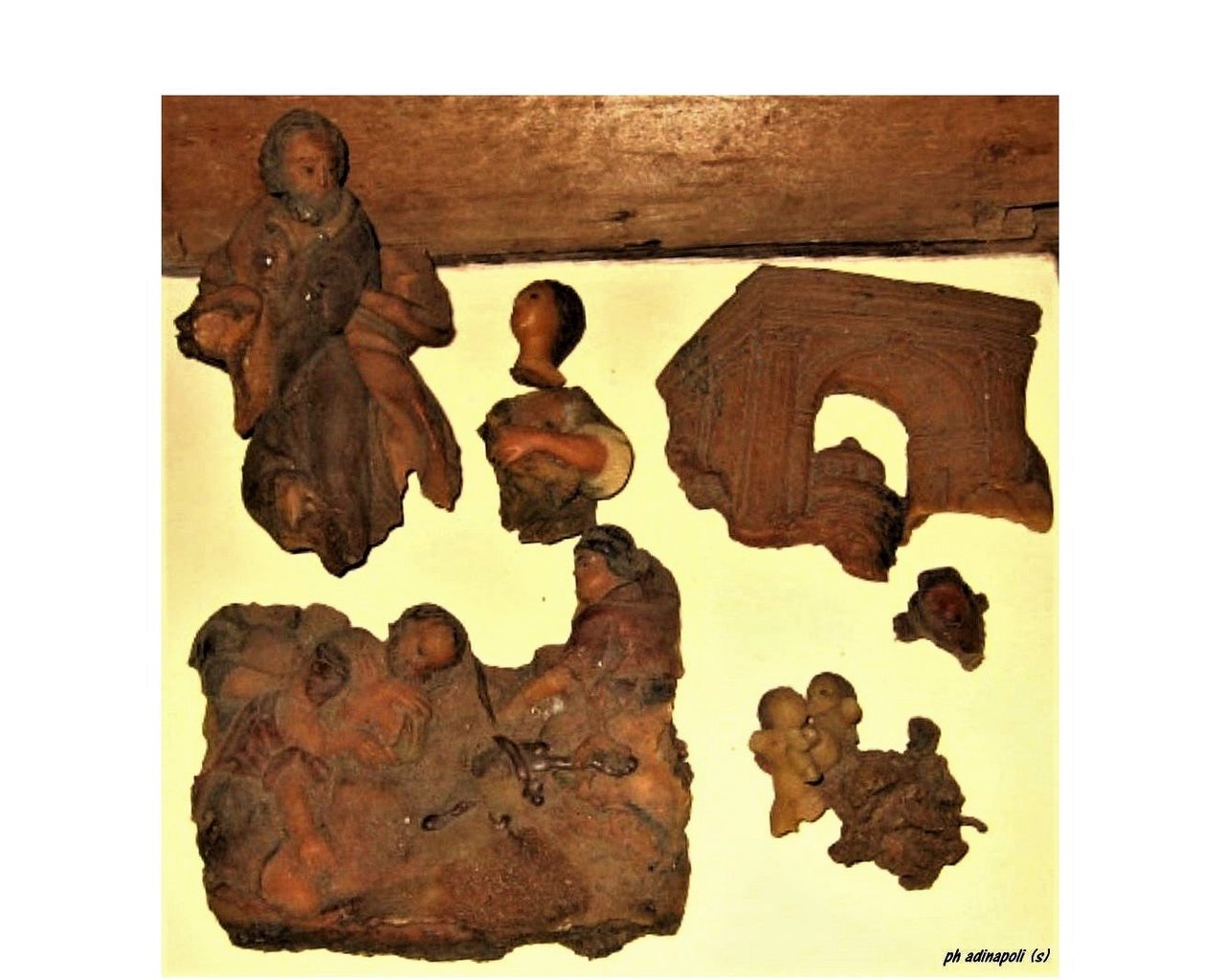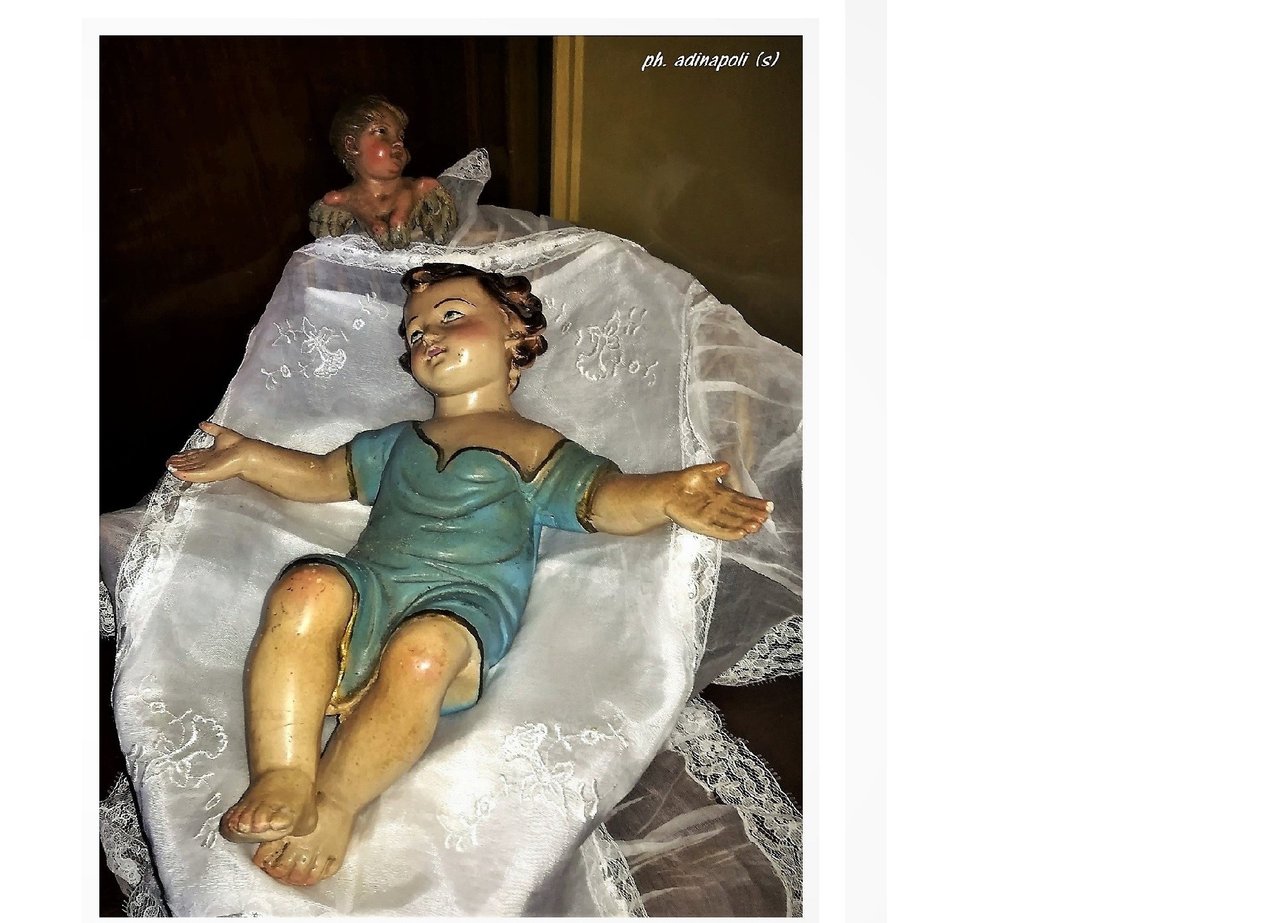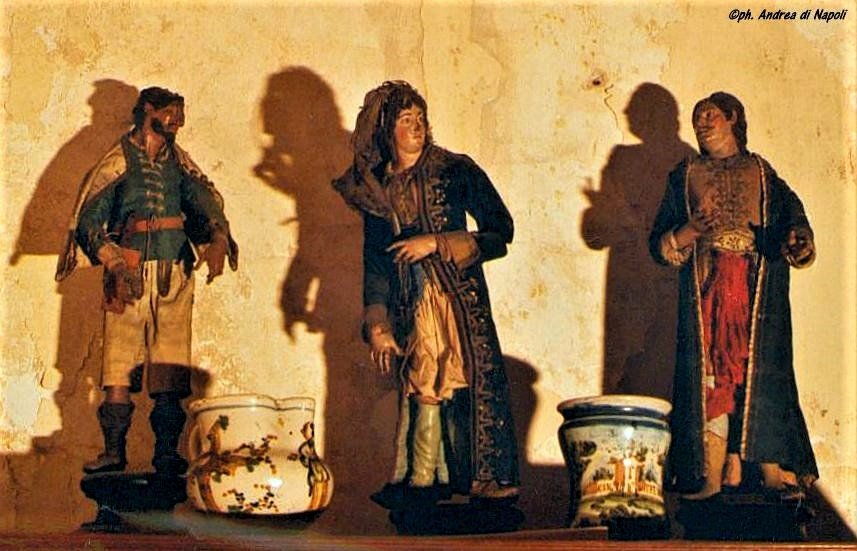3 personaggi di un settecentesco presepe artistico
 |
 |
Testo e fotografie di adinapoli (s)
Le fotografie sono di proprietà dell'autore.
ENG
Pastors and Princes - The representation of the Nativity, proposed for the first time by St. Francis of Assisi, has undergone various changes over the centuries, significant creative contributions and the precious artistic contribution of refined artisans. It is not surprising that the characters represented by the statuettes, sometimes even life-size, wear costumes from different eras and regions, as well as the presence of non-existent crafts and workshops two thousand years ago must be accepted. At least for one night the differences and miseries typical of human beings must not have any meaning. The costumes of cloth and miniature accessories, but working, complete the figures built in the eighteenth century which, sometimes, were adorned with the authentic jewelry of the wealthy patrons. This is the universal concept that inspired both the great masters and the small artisans when each of them wanted to provide their own personal representation of Christmas Eve. And if it is true that even the modest domestic cribs, improvised with plastic sheep and other "poor materials" communicate a message that is always current, then it is worth remembering the question of the great Neapolitan dramatist of the 20th century Eduardo De Filippo: «Do you like 'o presepio? »

